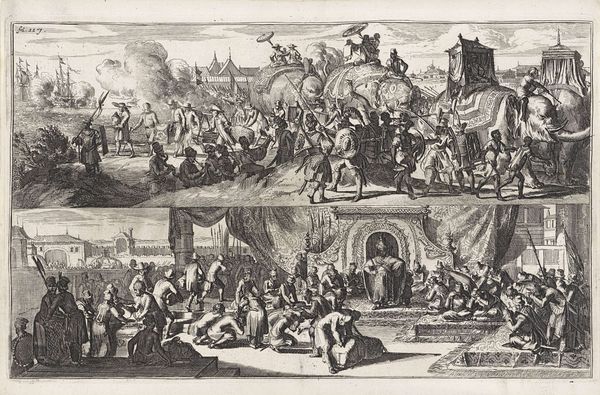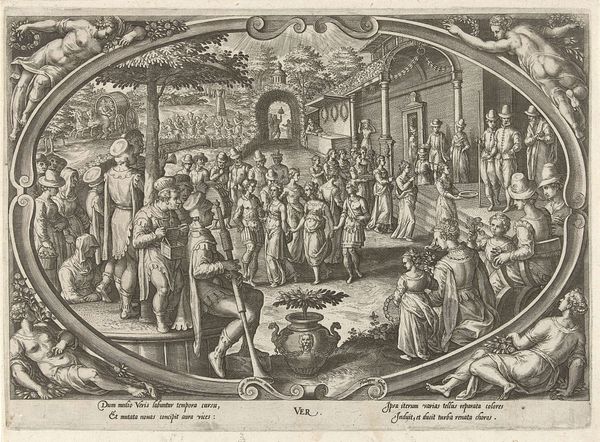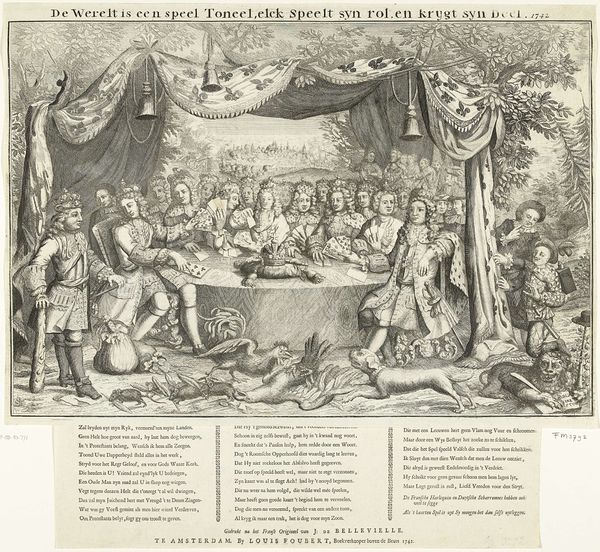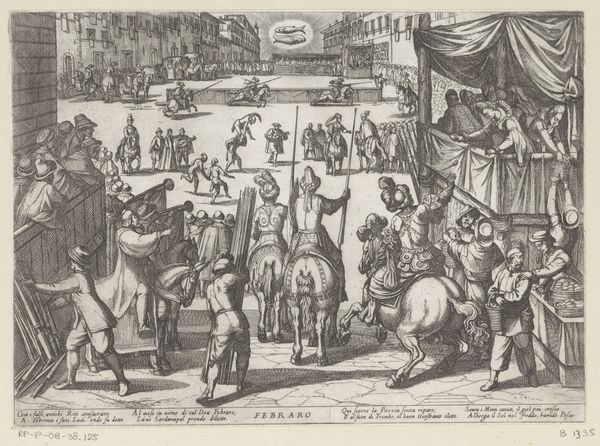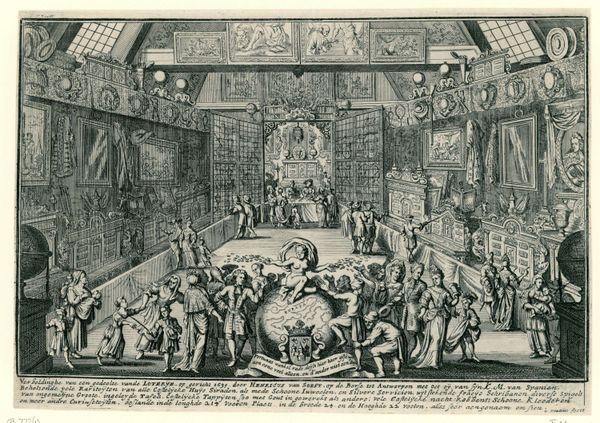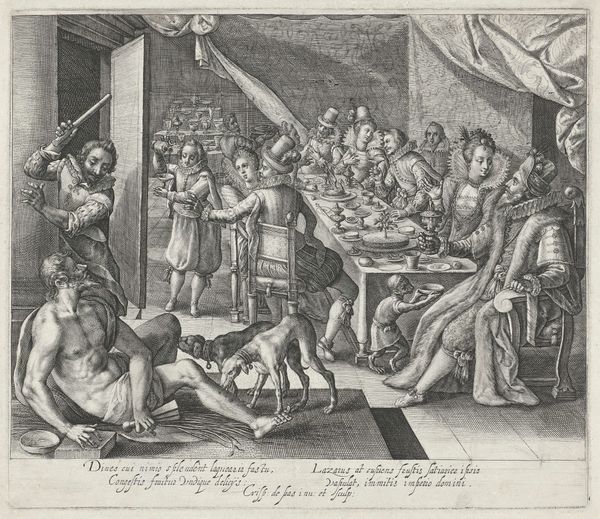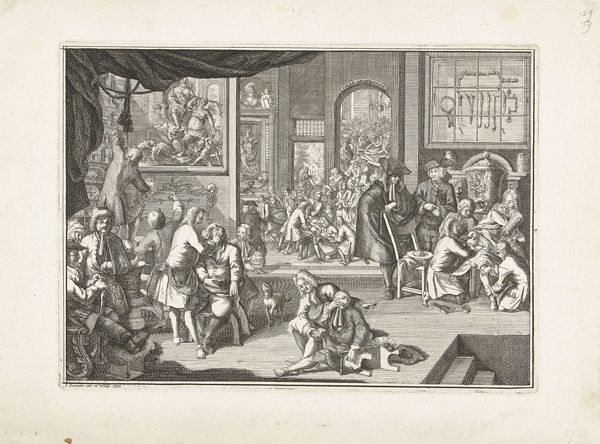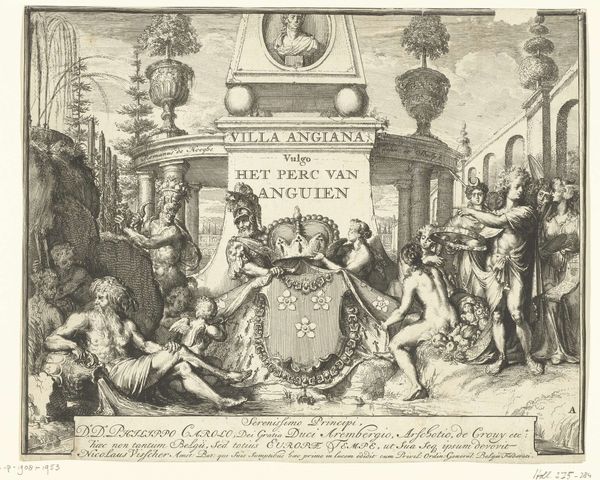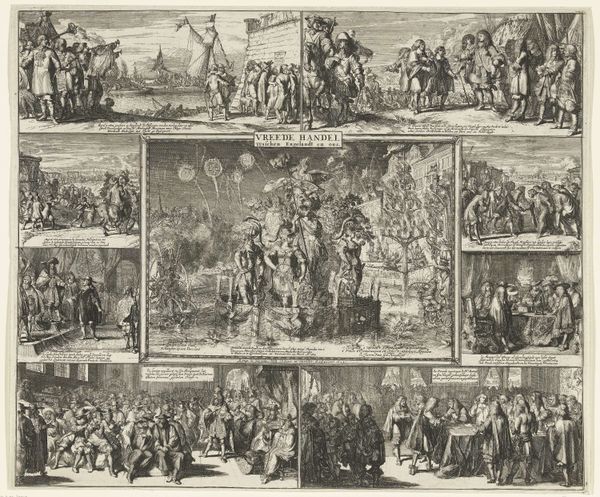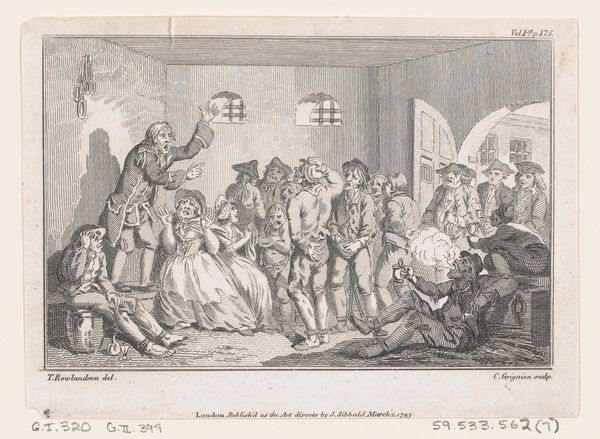
print, etching
#
allegory
#
narrative-art
#
baroque
# print
#
etching
#
caricature
#
history-painting
Dimensions: height 285 mm, width 355 mm
Copyright: Rijks Museum: Open Domain
Editor: Here we have a fascinating etching from 1683-1684 titled "The Just Peace Carriage of the Dominicans with a Broken Dung Cart." It's anonymous, but what a scene! It's chaotic and incredibly detailed. So, as a historian, what draws your eye in this crowded tableau? Curator: Well, first, it’s crucial to understand this as a piece of political commentary deeply embedded in the Dutch Republic’s religious and political tensions. Think about the Eighty Years' War and the subsequent power struggles. It looks like a caricature. Does it strike you that way? Editor: Absolutely! It feels like everyone is fighting and no one is a hero. Curator: Precisely. Look closely at the title. The “Just Peace Carriage” – what institutions might that refer to? And note it's associated with Dominicans. This implies a critique of their power and involvement in contemporary politics, wouldn't you say? Editor: I see! So, it’s suggesting that the Dominicans' idea of "just peace" is, in fact, a broken down, ridiculous mess represented by the toppled dung cart. It's very cynical. Curator: Exactly. Etchings like these were powerful tools for shaping public opinion. The accessibility of prints meant these images could reach a broad audience and influence perceptions of powerful figures and institutions. How do you think an artwork like this impacted its viewers at the time? Editor: I can imagine it caused quite a stir. This image simplifies a very complex situation but conveys how many viewed the church during this period of war. It gives the impression that not everything the church did had religious undertones. They were also after wealth and political influence, just like other big political players at the time. Curator: It really provides insight into how the Dutch viewed political and religious figures at the time. And considering its social function as commentary on power. Fascinating, isn't it? Editor: Definitely! I had initially thought it was just a scene, but you helped to show how prints are always deeply embedded with historical contexts.
Comments
No comments
Be the first to comment and join the conversation on the ultimate creative platform.
